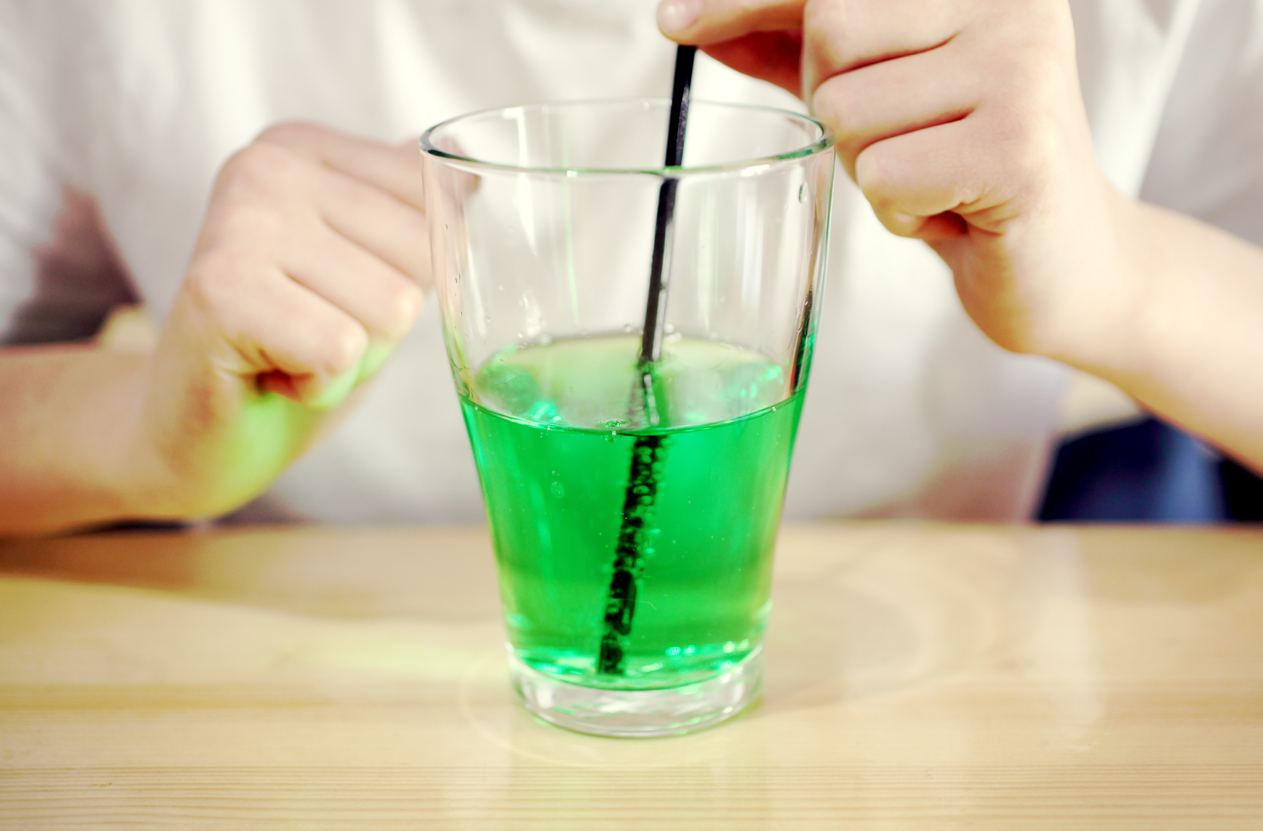When it comes to food safety, it’s important to take certain precautions, not just so that you avoid a night of feeling terrible, but to preserve your overall health. There are a few things we all do to ensure we’re eating the best we can be: we check for expiration dates and signs that our food has gone bad, we try to shop organic when possible, and we listen to what food safety organizations have to say.
But should we really be putting our trust in the FDA as much as we do? The fact that there are so many foods that are banned in other countries, but legal in the United States, makes for a compelling argument that we should not. According to the New York Times, the European Union has banned a lot of different food items and additives that have been linked to cancer, so why are they still available, and used constantly, in the U.S.?
The only way to truly eliminate these foods from your diet is to either move to a different country or start avoiding processed foods completely. You should also rely on pasture-raised, grass-fed, organic meats, and focus on a diet full of whole foods. It’s not easy! But just so you know, here are some alarming foods that other countries won’t even allow near their mouths:
1. Artificial food dyes found in foods like cereal, candy, sports drinks, soda, baked goods, and more
Artificial food dyes aren’t only used to add color to a specific food item — they can be used to make food appear “fresh.” They’re used in everything from candy to sugary cereals, and are even put in boxed macaroni and cheese. In the U.S., some of the most popular food dyes used in our food are either banned in Europe or come with a warning label.
According to reports, the European Union won’t sell food made with these additives (unless they come with a warning label) because they have evidence that these types of dyes can “trigger hyperactivity or inattention in children.” Some food dyes have been banned in the U.S., but not enough. In fact, in the countries where these dyes are banned, companies (like Kraft) will use natural colorants instead… and then they’ll continue using the artificial dyes in the U.S.
2. Milk made with synthetic hormones like rBGH and rBST
According to Shape, cows that have been treated with synthetic hormones like rBGH and rBST “often become lame, infertile, and suffer from inflamed and infected udders.” And it’s not much better for humans, as these hormones have been linked to breast, colon, and prostate cancers. That’s pretty terrifying, so why are we still ingesting them?
The answer is simple. These are growth hormones that speed up the development of cattle, meaning that companies get large numbers of cattle at a lower cost. Good for their pockets, bad for everyone ingesting the stuff. The European Union, Canada, Israel, Australia, New Zealand, Japan, and Argentina have all banned the use of rBST, but it’s still legal here. The good news is that a 2014 report said they are using the hormone less, but still.
3. U.S. beef created with hormones
Hormones aren’t only found in our milk and dairy products — they can also be found in our beef. According to the European Commission’s Scientific Committee on Veterinary Measures, the synthetic hormones that are used to help promote growth in cattle, like Zeranol and Melengestrol acetate, can increase the risk of certain types of cancer, like breast and prostate cancer. They’ve banned these hormones, but we haven’t. If you don’t want to eat it, you don’t have to swear off meat here completely — just opt for legitimate organic beef.
4. Farmed salmon
Salmon has so many great health benefits thanks to the omega-3 fatty acids packed in there. Unfortunately, this is only true if you buy wild salmon. Farmed salmon isn’t really doing anything. Farm-raised salmon are banned in countries like Australia and New Zealand because they are raised on an unnatural diet of grains and icky drugs like antibiotics. These additives leave the salmon with gray skin, and then that gets made to look pink with synthetic astaxanthin. This doesn’t sound great, because it isn’t. Synthetic astaxanthin can be toxic.
Wild salmon, meanwhile, is naturally a bright pink-red color thanks to their more natural diet. If you want to continue to enjoy salmon, spend the extra money on wild salmon or Alaskan sockeye, which is not allowed to be farmed.
5. Arsenic and chlorine found in our poultry
If you’re thinking to yourself, “What?! I don’t eat arsenic or chlorine!” the truth is… um, you might. According to Shape, most of the chicken we ingest in the U.S. is actually made with arsenic, which is totally allowed (it promotes growth and boosts pigmentation). The European Union, though, banned arsenic back in 1999. On top of that, the Environmental Protection Agency calls it a “human carcinogen,” which means that it’s kind of scary that we’re all still eating it when we eat chicken.
Much of our poultry is also washed in chlorine in order to wash off bacteria and other icky things like that. But is it safe? It seems to be a bit controversial. In 2015, the European Food Safety Authority said that it could be a health concern for children, which is probably why it’s been banned in the E.U. since 1997… but the U.S. insists there’s nothing wrong with it.
6. Genetically modified fruits and vegetables
Even our fruits and veggies may not be safe! A lot of the fresh produce we buy is treated with GMOs in order to make them stronger and more resistant to disease. That sounds good, but then why is this banned in the European Union? According to Time, more than 90% of all soybean cotton and corn in the U.S. is used to grow genetically engineered crops, and some of the biggest offenders include sugar beets, alfalfa, canola, papaya, and summer squash.
Don’t swear off produce just yet. According to the New York Times, GMOs could be perfectly safe. While there are definitely concerns out there, the Times says none “have been clearly demonstrated,” and some experts swear they are fine.
7. Brominated vegetable oil found in sports drinks and citrus sodas
If you love drinking sports drinks and citrus sodas, you may be interested to know that you won’t find these in Europe. Brominated vegetable oil, also known as BVO, is used in these types of drinks as an emulsifier. The New York Times says that BVO “prevents separation of ingredients” and contains bromine, which is found in brominated flame retardants. That already doesn’t sound like something you want to drink, and studies back up that it might be as icky as it seems. It could specifically lead to memory loss, and skin and nerve problems.
And that’s not all: Shape says, “It’s been linked to major organ system damage, birth defects, growth problems, schizophrenia, and hearing loss, which explains why it’s been nixed in more than 100 countries.” Yikes doesn’t cover it.
8. BHA and BHT found in cereal, butter, meat, snack foods, and more
In the U.S., BHA and BHT are flavor enhancers and preservatives that are widely used in a variety of different foods in order to make things taste good and give them a longer shelf life. They are really restricted in other countries and in Europe, but here… well, not so much. Even scarier? BHA is listed in a U.S. government report on ingredients that are “reasonably anticipated” to be human carcinogens, meaning it probably causes cancer. And yet, it’s still everywhere.
9. Meat made with ractopamine
Ractopamine might not sound familiar to you, but if you eat meat, you’ve likely ingested it. It’s a food additive that has actually been banned in 160 countries… but not here, where it’s used in an estimated 60 to 80 percent of livestock. Ractopamine is used because it causes weight gain in animals, which is ideal because they then produce more meat (and thus, more money).
But ractopamine is almost definitely not good for us, or the animals it’s being fed to. According to LiveScience, it can make pigs gain so much weight that they become ill and very fatigued, and can barely even stand. As for humans, scientists don’t really know what ractopamine does, but it could be linked to an increase in heart rate and the risk of heart disease.
10. Olestra found in many fat-free snacks and foods
Olestra is an additive that basically makes fat-free snacks taste like they contain more fat and calories than they actually do. Sounds great, right? Well, it would be if it wasn’t so bad for you, which is why olestra is banned in the European Union and in Canada. According to Time, who calls it one of the worst inventions ever, “It not only removed unwanted fat from foods but also negated the body’s ability to absorb essential vitamins.” Some of the side effects of eating food made with olestra include cramps, gas, and loose bowels. Plus, a 2011 study found that eating olestra could actually make you gain weight, not lose it.
11. Azodicarbonamide found in cereal, breads, boxed pasta, frozen foods, and fast food
Azodicarbonamide, or ADA, is a chemical substance that is used as a whitening agent and as an additive that can help bread rise faster and make it last longer. ADA is commonly used by fast food chains for burger and sandwich buns, but is also found in cereal and pasta and more. Research has shown, though, that ADA might be carcinogenic, which is why it’s banned in the E.U. and in Australia.
According to NaturalPedia, ADA has also been shown to increase your risk of asthma, cause diarrhea or cyanosis, affects your gut microbiota (which can lead to disease), and even makes you more susceptible to depression.
12. Potassium bromate found in most bread products
Potassium bromate is another additive that’s in a lot of U.S. bread products and is banned in other countries, including the EU, China, Brazil, and Canada. It basically bleaches dough, making it look whiter and rise higher while decreasing baking time (so, again, it helps companies make money faster). According to LiveScience, Japanese studies from 1982 showed that potassium bromate can cause cancer in the thyroids and kidneys (among other body parts) in rats and mice, which is around the same time it was banned in other countries.
The New York Times says, “The International Agency for Research on Cancer considers it a possible human carcinogen, and the Center for Science in the Public Interest petitioned the F.D.A. to ban it nearly 20 years ago.” And yet… it still exists in the U.S.

